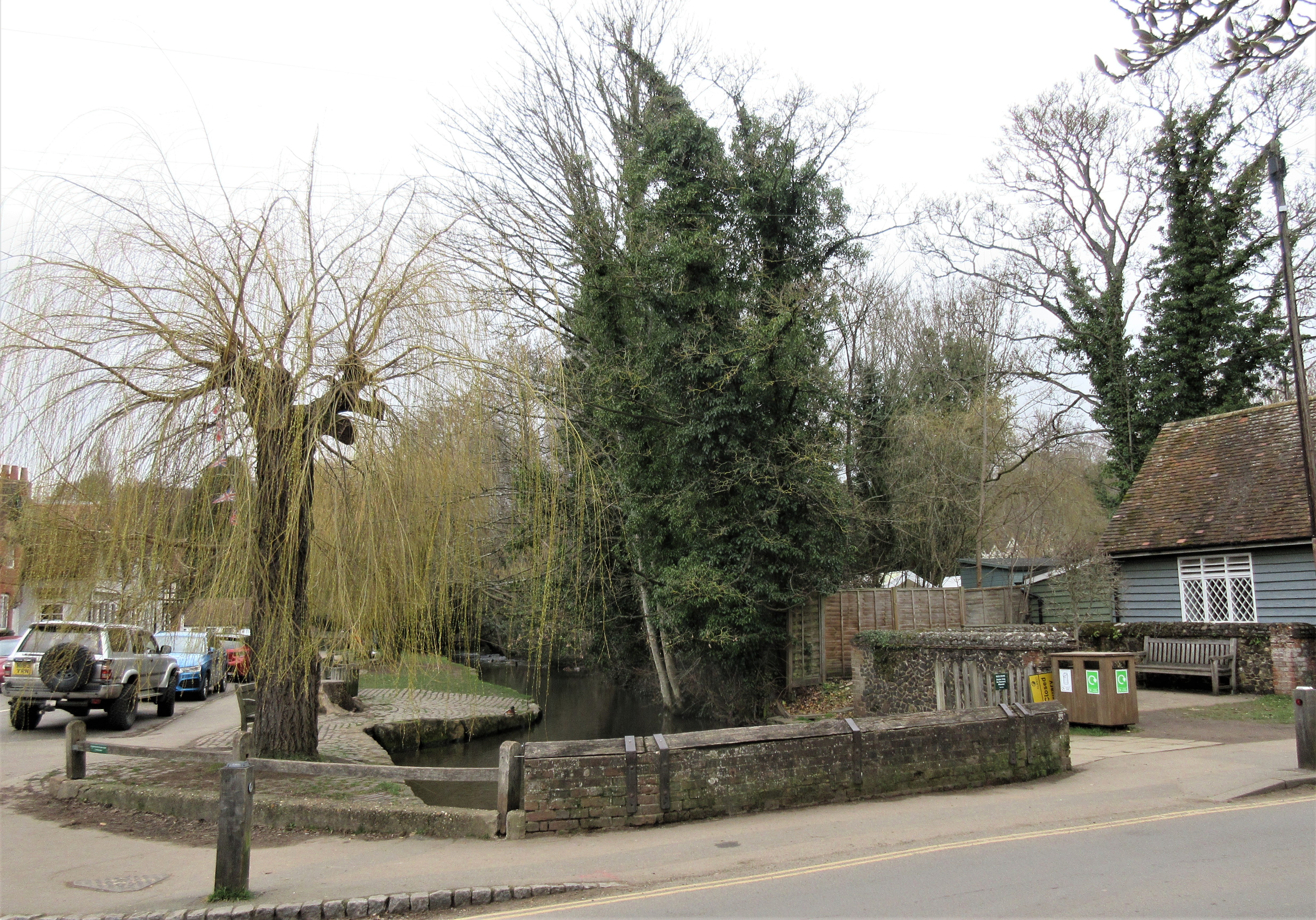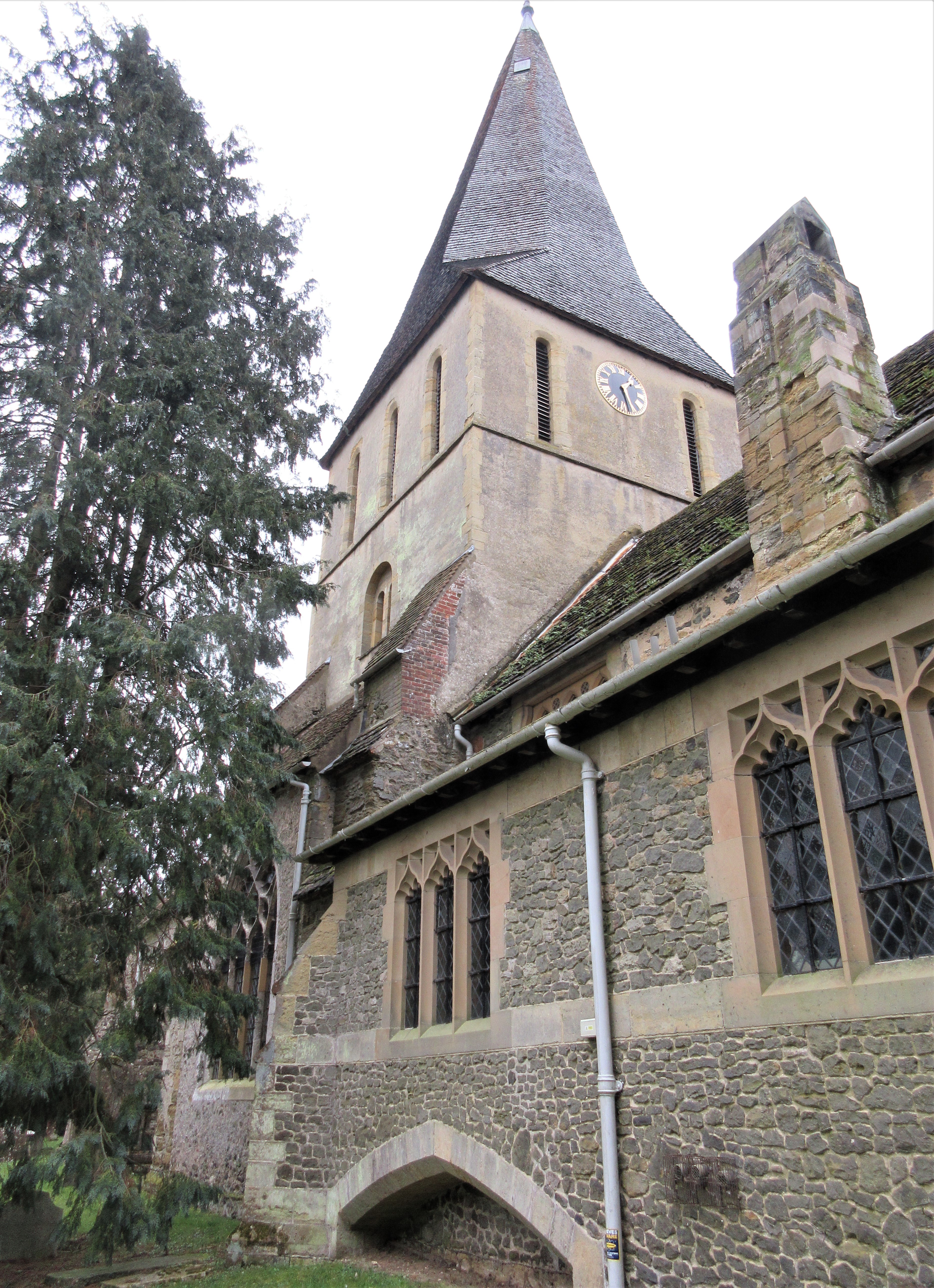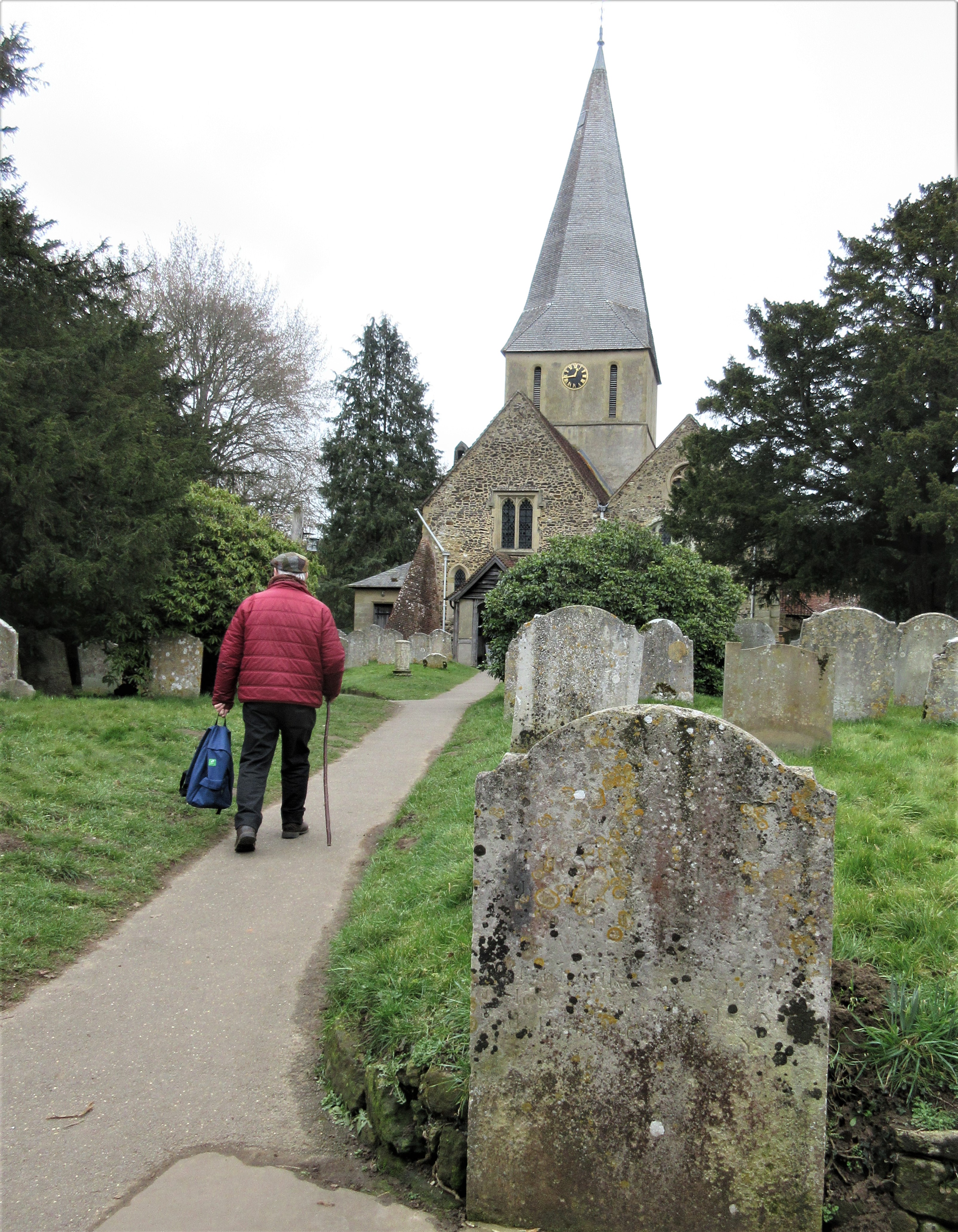Nestling in the wooded Surrey hills, the 12th century church of St James’ church stands in the heart of the village of Shere near the ancient ‘Pilgrim’s Way’ road from Winchester to Canterbury Cathedral. Dedicated to St James, one of the twelve disciples, it is thought likely that a church stood on the site long before the Normans arrived as mentioned in the Domesday Book of 1087.
Staying in the nearby area for a couple of days we visited the village of Shere with its charming buildings of timber-framed and whitewashed cottages and its stream of ducks. You can well understand why this place is a favourite location for film makers with scenes in Bridget Jones, The Holiday and The Edge of Reason.
Parking near the stream we made our way through the village stopping for a refreshing cup of coffee at The Dabbling Duck.
Setting out towards the church, approached by a cobbled lane, we entered via the lych gate, designed by Edwin Lutyens in 1902.
After an initial look inside I sought out some information to find some history. Though the exterior of the church, certainly originally being built of timber, is fascinating, it is the inside which holds your attention.
Alterations and restorations have been carried out from as early as the 1200s to the present day. The 13th century underwent substantial alteration and extension. The south aisle was extended to the same length as the original chancel. At one time this part of the church now known as the Bray Chancel, was full of pews. Today you will see it has a large oak alms coffer standing in the area which used to collect money by order of the Pope for Crusaders who were fighting in the Holy Land.
An arch was opened between the chancel and extended aisle and the tower was heightened to incorporate a bell chamber and topped by one of the finest spire frames in England.
The south doorway which incorporates the original carved Norman arch entrance was installed as a second entrance. The door is of rough oak and well studded, dating from around 1200.
On the south side of the west doorway, a hole extends into the wall with about a six foot depth.
The north wall, rebuilt in the 14th century had two small openings (now sealed).They were connected with a cell on the outside of the church which no longer exists. However, a built-up archway can be seen on the outside wall. The aforementioned cell was the home of The Anchoress of Shere, Christine Carpenter who lived in Lower Street.
Christine sought permission, as an act of great piety, to be enclosed in a cell at Shere Church in July 1329. Permission was granted and Christine was enclosed in the cell. So began her life of solitude and contemplation. She could only see the altar through the squint window and received the bread and the wine through the quatrefoil. Food was put in by her family and friends through a grating on the outside wall.
After 3 years, Christine left her cell and returned to the world, only then, to reconsider and petitioned to be enclosed again. The Bishop consented but this time he said, “We order and command you that the said Christine shall be thrust back into the said re-enclosure….that she may learn at your discretion how nefarious was her committed sin…” How and why she came to commit the “nefarious sin” of leaving her cell and what happened to her eventually, remains a mystery. I did find, however, that Liz Herbert McAvoy in her article for the Oxford Dictionary of National Biography, writes that after her release, Christine ‘was seen to be “gadding about” the countryside, engaging with the dangers of sinful temptation, and in her wanderings presenting a ready prey for the devil).
Information about St James’ church in the 1550s comes from the Book of Reckonings, a record of the property at that time. The ancient book was found in a terrible state at the end of the 19th century, and then carefully preserved. It holds a graphic account of the pre-Reformation church with its treasures and colourful vestments.
The first entry dated October 23, 1500 holds the inventory of the church’s possessions, including vestments, cloths, chalices, bibles and crosses.
The Book of Reckonings also show a new porch was constructed in 1547. In 1500 there were three bells with two more added in 1529 and a sixth thought to be in 1590.
In the 18th century there were three main structural developments. The west gallery was erected by public subscription in 1748 at a cost of £27-18s-6d. It was built for the poor of the parish and had an outside stairway of 11 wide stone steps which is still the only way up to the galley today. Around the same time, a musicians gallery was built along the north wall of the aisle, access also, by an outside stairway. (entrance door outline still visible). The gallery only lasted for a few hundred years then the pillars were renewed in brick and later were cased over thickly with plaster.
In 1937 it was found that the death watch beetle had affected many of the roof timbers. Oak beams and rafters were replaced and plaster ceilings removed, This work was interrupted by the Second World War and, although bombs fell in the village the church escaped damage. Restoration of the spire, tower and bells resumed in 1946. 1967 saw the organ console and choir stalls removed from the chancel to the south aisle. The organ was rebuilt in the gallery.
The churches huge key is still used to lock the west door and is thought to date from the 17th century. In the west porch there is a photo of “a faithful servant”, Mrs Emma Diggins shown with the key in the early 1900s.
The Madonna and Child is a tiny statuette displayed in the south aisle and dates around 1300. It is thought to have come from a pilgrim’s staff or, a Bishop’s pastoral staff and was found in 1886 by a lady and her dog in the woods above Shere. It was given to the church as a memorial to Elsa Barclay in 1956. Stolen in 1971, it was later recovered by police from a thieves’ hoard in 1973.
The Millennium Stone is found alongside the path between the lychgate and the west porch and was carved by Cliff Palmer of Letters in Stone. It was given by the Bray family and erected in 2000 and is inscribed with the Rule of the 18th century preacher John Wesley.
Time well spent in this endearing village and its interesting church.
Is worth a visit.












